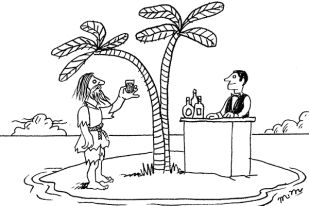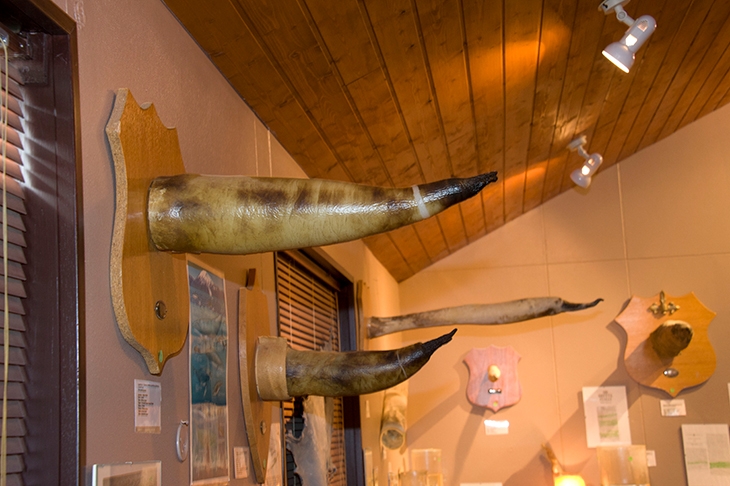Competition is stiff among museums in Iceland. The Phallological Museum in Húsavík, devoted to the penis, stands tall in a crowded field: 265 museums and public collections operate in a country of 330,000 — a population, incidentally, with the highest literacy rate in the world.
A. Kendra Greene, an American writer and artist, has worked in a number of museums, and her affection for them is touching. Indeed, it is the blurred edge between a few shelves in a front room and a civic institution that originally drew her to northern latitudes. She writes of Iceland:
I have never known a place where the boundaries between private collection and public museum are so profoundly permeable, so permissive, so easily transgressed and so transparent as if almost not to exist.

The Museum of Whales You Will Never See is structured around eight ‘cabinets’, each containing a ‘gallery’. The galleries, introduced by a short reflection, mostly tell the detailed story of one museum, though over the course of the book they add up to a personal portrait of the country.
We learn much about Iceland from these pages. Public honesty means that a bicycle never needs to be locked; 1,500 pairs of Eurasian wigeon paddle on one northern lake; and isolation has resulted in a unique ecology. Wisely, Greene touches only briefly on the economic cycle: 1,000 years of bare feet and turf huts (as she puts it), then a boom, followed by the infamous banking collapse of 2009.
Her main interest is in stories, and in particular the stories of the museums’ foundations. The book’s title refers, somewhat obliquely, to her belief that it doesn’t matter if you don’t see something, as long as you think about concepts, myths and ideas that exist in the imagination. Collecting objects, as museums do, is ‘the way we survive’, because in gathering them we fashion narratives from the shards of the ‘painfully, gloriously physical world’. These stories, endlessly retold in Iceland, represent old forces, like the magma of its volcanoes, that ‘shape the world anew’.
As for the Phallological Museum, lit by scrotum skin lamps…I will spare readers the details
As Greene travels around both the mainland and its satellite islands she riffs on the treeless landscape: ‘There is scrub and fog and midges, and lava coiled into whorls like the grooves of massive fingerprints.’ Elsewhere she notes ‘the Doppler shift’ of a whizzing Arctic tern. There is something of the extended poem about this book.
Skógar Museum, like many of its kind, specialises in local folk artefacts and discarded domestic items. It is situated in a southern village of 21 souls (50 is the threshold for a town) on a sandy coast so shallow and shape-shifting that it runs 300 miles without a harbour. Greene enjoys looking at ‘poor people’s stuff’, such as dung forks and turf knives. As for the penis museum, a trove lit by scrotum skin lamps, it focuses on the organs of animals, though the human variety does make an appearance. I will spare readers the details.
Greene’s style is arch and whimsical, and full of jaunty assertions: ‘They say the thing that changed Iceland was the rubber boot.’ She also has a fondness both for the colloquial (‘the phone at home on the farm was on the fritz’) and for mystical reflection, which occasionally careers into incomprehensibility: ‘If you cannot imagine the terror of trees, what understanding can we share?’ But the corny jokes are fun: photography is permitted in the penis museum — so ‘visitors may flash all they like’.
The founders of these museums are brought alive in delightful vignettes. Here is Sigurgeir, dead in an ice accident, who started his Bird Museum at his traditional farm on Lake Mývatn. Before that, he maintained a collection of ‘belly-button lint’. His sister, Stefani, works at the museum daily, after feeding ten milking cows and nine beef cattle, while Kristin, a volunteer there, spends time off foraging for medicinal herbs.
The past slips away from us all, Greene says, and museums symbolise the need to preserve it. A collection might even be ‘a safety net in the lonely struggle to hold on’. She writes of generalised anxiety about the future — hers and the Icelanders’. ‘It’s always been the story that mattered most,’ she concludes; ‘the connections inferred… the object as a touchstone to who we are and where we come from.’






Comments